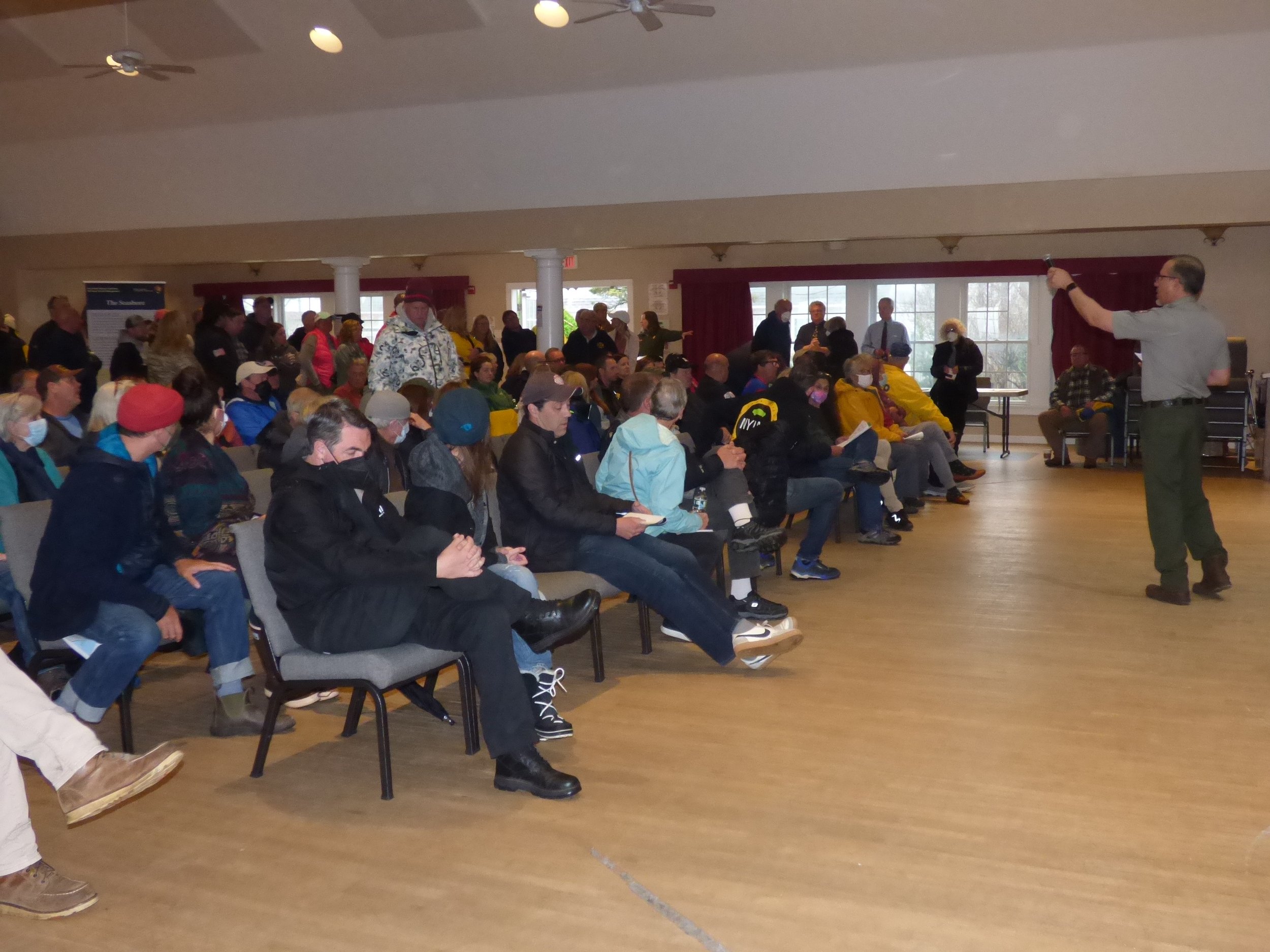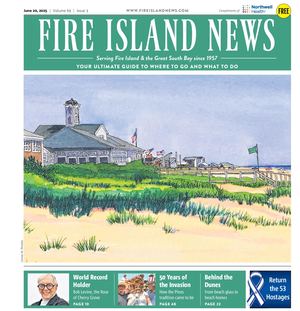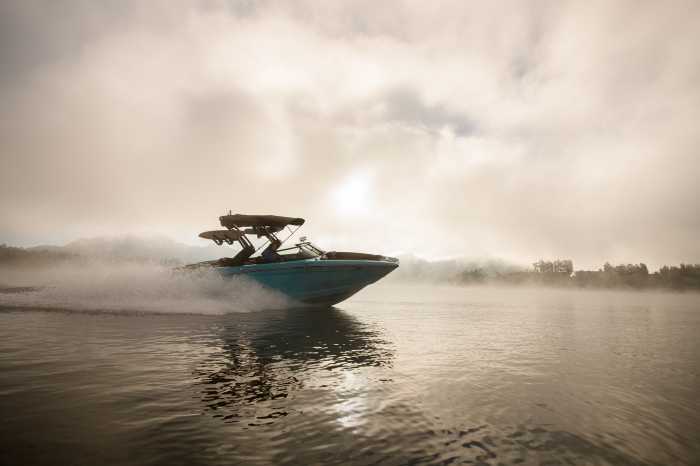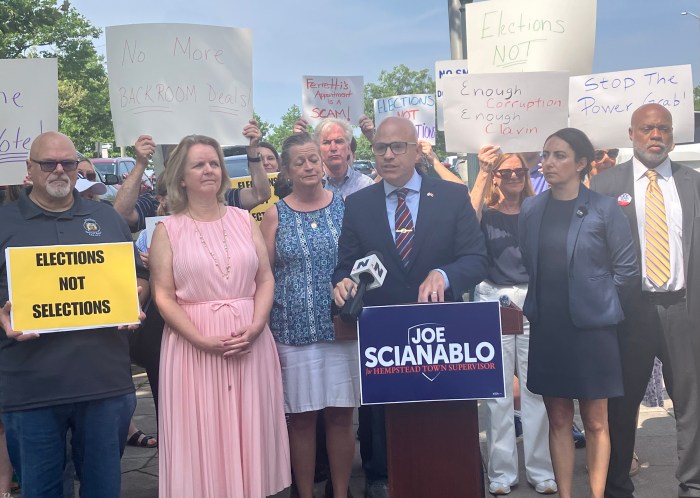
SUBJECT DRIVING REGS: FINS Superintendent Alexcy Romero addresses audience at the Ocean Beach Community House on Friday, May 6, 2022.
Since the days of being deemed a National Seashore by an act of Congress and signed into law by President Lyndon B. Johnson in 1964, driving regulations on Fire Island have been cloaked by multiple layers of local, state and federal government policy. The federal layer under the auspices of the National Park Service is dictated by a code known as 36 CFR 7.20 (a), which outlines who can apply for a driving permit on Fire Island, the types of permits that exist within the regulations, sets limits for types of permits issued, sets vehicle specification, boundaries on when and where driving on Fire Island can take place, as well as defining the process for obtaining the permit itself. Sometimes locally referred to as the “blue book” regulations, they were first introduced to Fire Island in 1977, and were last updated 35 years ago in 1987.
The most recent wave of meetings took the form of another online presentation on Thursday, May 5, followed by an in-person meeting held at the Ocean Beach Community House the following Friday evening, May 6.
According to FINS, 312 individuals logged onto the May 5 virtual meeting on Thursday evening. Takeaways from the presentation included the following:
• Proposed elimination of driving permit caps to qualifying full-time year-rounders who meet the eligible criteria. Instead, the number of trips any permit holder can take per day on and off the island would be more strictly regulated. Presently limited to 145 permits, a standing waiting list has existed for years, and it can take over a year for an eligible family to get their turn. This has been especially stressful during the COVID-19 pandemic which brought new families who chose to shelter on Fire Island. Caps would stay in place for part-time permits not to exceed 50 in total, for permit holders who resided on Fire Island prior to 1978.
• Elimination of the “municipal” driving permit category also was proposed. Presently all permit categories – year-round, part-time, essential service, construction, recreation, and temporary – have been under the direct control of FINS. However, the municipal category contains a discretionary element from the Fire Island community itself. The needs of community employees and small year-round business owners would be absorbed by other existing categories should this change go into effect.
• Permit use periods would become more standardized from year to year to avoid the confusion that sometimes persists under the current system. This proposed change may result in slight extended time windows in certain circumstances.
Published literature circulated by FINS stated that the goals and objectives of the proposed changes in driving regulations were in the interests of protecting island visitor use and safety, as well as protecting the sustainability of Fire Island’s roadless character. The Q&A period following the online presentation signaled that some who tuned in were have trouble grasping how the proposed changes to the 36 CFR 7.20 (a) driving regulations accomplished FINS’ outlined goals and objectives.
Community leaders and year-round residents expressed concern over lifting the caps, which could lead to an influx of vehicles on the beach. Seasonal residents, who sometimes don’t care for shoulder season driving, indicated displeasure over lengthened time windows veering to the weekend before Fourth of July, when the beach and communities are well populated with pedestrian traffic.
One unscripted moment in the presentation came at about 56 minutes into the meeting when FINS Superintendent Alexcy Romero said that the ferry companies that service Fire Island had sometimes “failed miserably” in some of their scheduling attempts to accommodate ridership. Surrounding FINS staff as well as Romero himself swiftly tried to backpedal that remark, but accomplished this with mixed success.
At a crowded meeting at the Ocean Beach Community House on the following night, attendees were greeted with individual stations of enlarged banners from the prior evening’s presentation manned by various FINS personnel.
“There is no clear-cut solution that will please everyone,” said Romero as he briefly addressed the audience. “The question is can we live with it? Can we make it work?”
Romero concluded his 10-minute talk without taking questions from the floor.
Conspicuously absent from this round of dialogue was the work accomplished by the Negotiated Rulemaking Committee that revisited the driving regulations in 2002, nicknamed at the time “Reg Neg.” Perhaps this is because that process derailed when then Superintendent Constantine Dillon remarked, “Fire Island National Seashore wants to get out of the driving permit business.”
National Environmental Policy Act (NEPA) draft regulation preparation, public scoping and document review will continue through the summer of 2023, with a decision from the National Park Service anticipated at the end of 2023 or early 2024.
A full podcast of the May 5, 2022, presentation can be found at https://vimeo.com/708834478
Comments are being accepted electronically via the NPS website https://parkplanning.nps.gov/FIIS_ORV or can be mailed in writing to Off Road Vehicle Management Plan, Attn: Superintendent Alexcy Romero, Fire Island National Seashore, 120 Laurel St., Patchogue, NY 11772 through May 20, 2022.






























